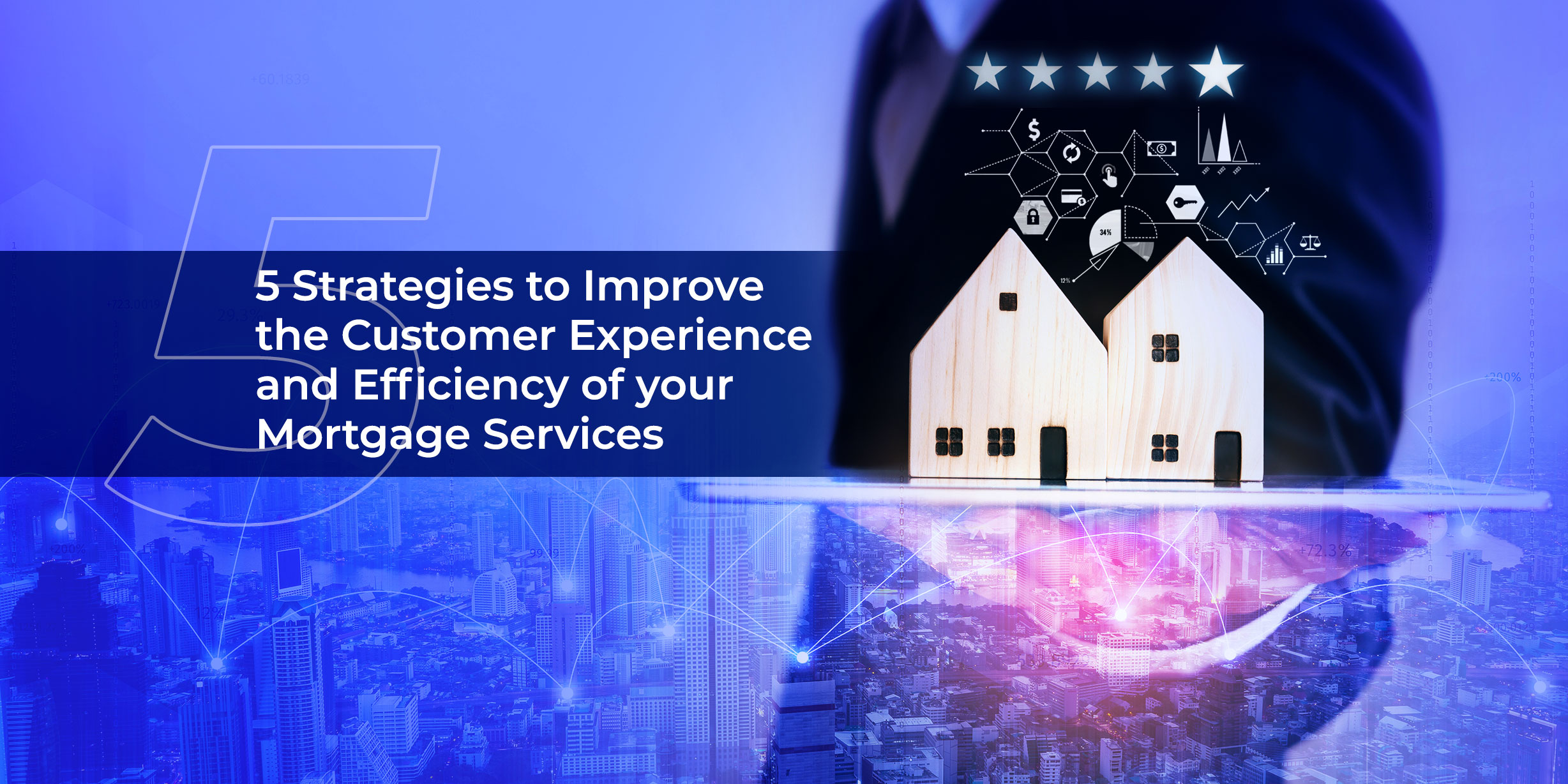Even before the pandemic, the state of customer satisfaction in the US mortgage was less than satisfactory. A survey by McKinsey revealed that only 42-67% of borrowers were happy with the customer experience they received from their mortgage providers in 2019. Traditional banks lagged behind their new-age counterparts by a margin of 20-30%.
In the quarters that followed the industry faced new challenges – particularly in the form of refinancing hassles that caused customer satisfaction to dip further. Meanwhile, servicing costs and efforts have only increased to keep to changing regulations and fluctuating rates. As a result, J.D. Power found that the quality of CX declined for both banks and non-bank lenders in 2020-21.
Mortgage providers need to proactively counter this trend with strategies that boost customer experience while driving efficacy. The goal, ultimately, is to offer borrowers a frictionless experience during what is often the most important financial decision of their lives. At the same time, lenders need to adopt strategies that reduce the time, effort, and errors involved in the customer servicing process in order to keep up with a dynamic market.
Here are five strategies that can help:
1. Deliver a one-stop customer experience
One of the biggest challenges in the mortgage customer experience is that the journey is fragmented across multiple channels, touchpoints, and stakeholders. Homebuyers are often left running from pillar to post, as it were, instead of receiving a CX that simplifies the borrowing process and inspires confidence.
It is possible to address this through a one-stop solution that consolidates all of the services and solutions that the customer may require. Lenders can develop web-based applications and mobile apps powered by cutting-edge technologies like chatbots to provide customers with a unified experience.
2. Stay available 24/7, 365 days a year
Purchasing a home and obtaining a mortgage can be a daunting process, particularly for first-time buyers and customers in the millennial and Gen Z segment. Constant availability and responsiveness help to build trust between the borrower and the lender, which translates into a better customer experience.
It also makes serving processes simpler, as mortgage providers can obtain documentation, approvals, and fees more easily when there is already a regular line of communication in place. Fortunately, omnichannel customer engagement tools allow you to reach out to borrowers on their preferred platforms at their preferred time of day.
3. Automate what can be automated
Mortgage process automation can be extremely beneficial for CX. This is because most of the friction in borrower journeys is caused due to delays and errors arising from manual processes. Automation also means that the lender’s workflows are standardized and connected, which makes it easier to retrieve information and maintain transparency.
A good rule of thumb is to automate whichever process is frequent, high volume, and low on variability. For example, lenders can trigger an automated thank you mail after the receipt of every mortgage application, repeating the same message but personalizing the mail for each individual customer. Similarly, data entry, information transfers between systems, routine servicing updates, document reviews, etc., are all processes that can be automated.
(You can explore the three types of automation most suitable for mortgage businesses to find an approach that works for you).
4. Lean heavily on customer intelligence insights
Today, attracting and retaining customers is no longer only about offering a clear cost-benefit. Borrower preferences vary across regions, demographics, and other cohorts – and this analysis should determine how you shape your customer engagement strategy, including the products offered. For instance, consider the findings of McKinsey’s customer intelligence insights on first-time and repeat buyers.
While first-time buyers overwhelmingly prefer banks (76%), repeat buyers are more open to experimentation and only 55% will choose a traditional bank as their lender. How they conduct research is also different, with repeat buyers using online search 10 percentage points less than those purchasing a home for the first time. The two groups should be targeted in very different ways and the key to CX success will be distinct for each group.
5. Adopt cloud-based technologies
The cloud is central to improving mortgage businesses as a whole, with vital implications for customer servicing quality and efficiency. Cloud-based technologies are intrinsically agile due to their extensible architecture, which makes it easier to make quick CX decisions like expanding your reach into new channels. Keep in mind that CX on only one channel fares 10 percentage points worse than omnichannel ones. Similarly, cloud-based loan servicing solutions and support systems are easier to adapt, can be operated remotely, and offer essential cost advantages.
Start by assessing your CX maturity
Most financial services providers still operate on a minimum viable product (MVP) model when it comes to customer experience.
The first step is to abandon this mindset, recognize CX as a competitive differentiator, and identify the link between CX excellence and operational efficiency. That is why lenders should first conduct a thorough and honest as-is evaluation that drills down into their current CX capabilities. Once this is in place, you can delineate specific points of improvement to be addressed through cutting-edge mortgage technologies and an overall process reimagination.
Throughout this transformation journey, one must work with a battle-tested partner who combines mortgage industry experience with digital expertise.
At Nexval, our team of 1,000+ SMEs and technical specialists (DevOps, cloud-native app development, artificial intelligence, automation, and cybersecurity) deliver holistic solutions that help borrowers modernize. This, in turn, trickles down as tangible customer gains and significantly impacts top-line revenues.
Where does your organization stand on the CX maturity curve? Speak to our Tech Gurus to find out.
Author: Marie Fernandez-Abou, Chief Marketing Officer, Nexval


